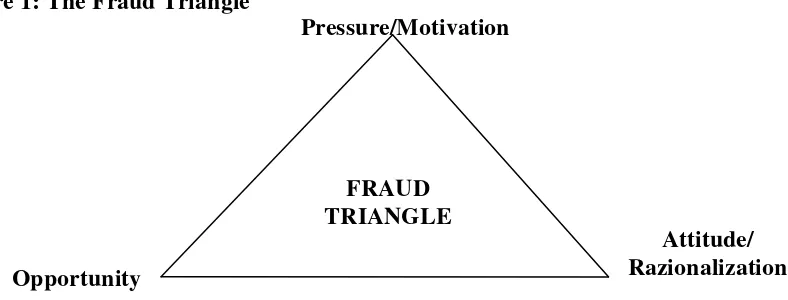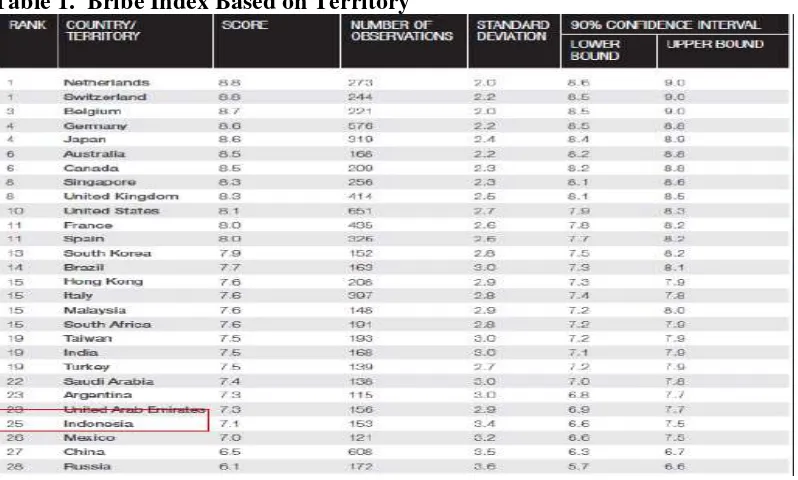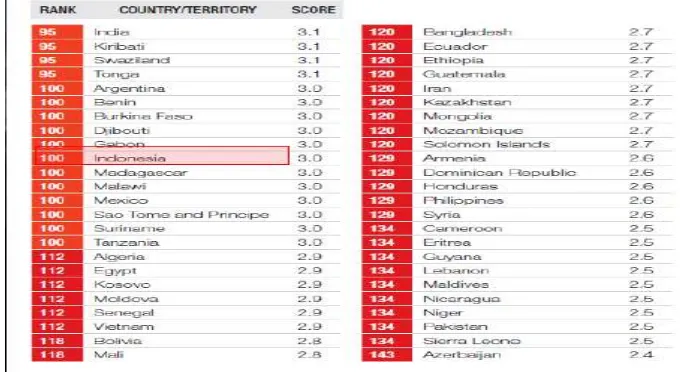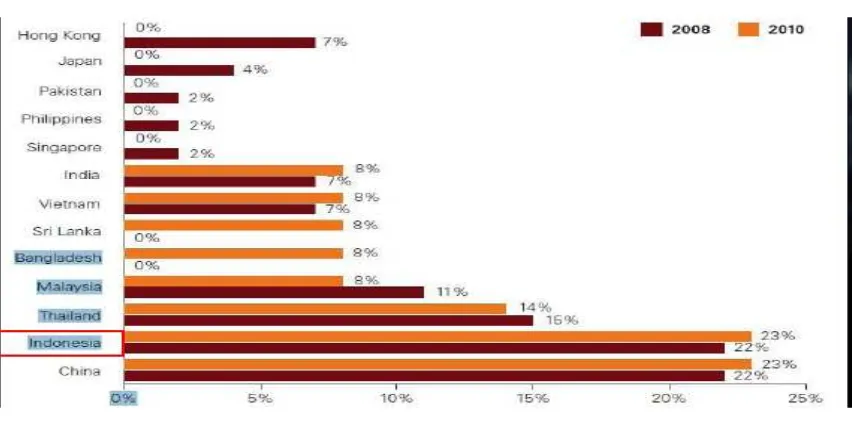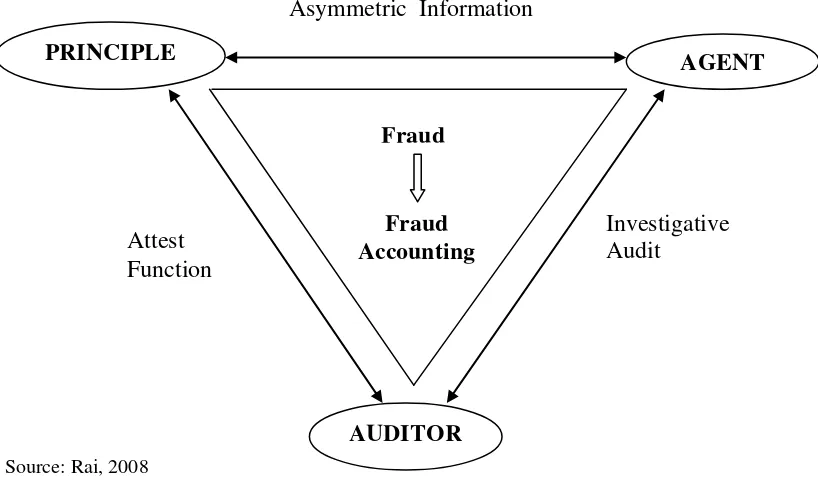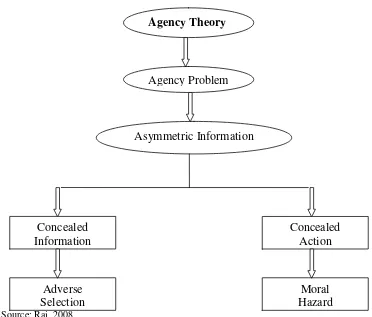1 The importance of Forensic Auditing to Combat Fraud in Indonesia
Lukluk Fuadah auditing to combat the fraud in financial transactions such as corruption in Indonesia. There are several sections in this paper. First section, it will explain the definition of forensic auditing. Next section, it will explain about the characteristics of Forensic Accountant and fraud Triangle. The Fraud triangle embodies the three conditions generally present when fraud occurs, incentive/pressure, Opportunity and Attitude / Rationalization. Third sections, it will show the real condition in Indonesia based on several data such as Bribe Payers Index 2011, Corruption Perception Index 2011, Fraud in Asia. The next section will explain based on agency theory. The final section, it will explain some strategies to prevent Fraud in Indonesia.
Keywords: forensic auditing, fraud, corruption, bribe.
1. Introduction
1.1. Definitions of Forensic auditing
2 The definition of forensic accounting is changing in response to the growing needs of corporations. The forensic accounting is as “the application of financial skills, and an investigative mentality to unresolved issues, conducted within the context of rules of evidence. As an emerging discipline, it encompasses financial expertise, fraud knowledge, and a sound knowledge and understanding of business reality and the working of the legal system.” This implies that the forensic accountant should be skilled
not only in financial accounting, but also in internal control systems, the law, other institutional requirements, investigative proficiency, and interpersonal skills (Bhasin, 2007).
3 inventories, or the presentation thereof that is of such quality that it would be sustainable in some adversarial legal proceeding, or within some judicial or administrative review. Forensic accounting is focused, therefore, upon both the evidence of economic transactions and reporting as contained within an accounting system, and the legal framework which allows such evidence to be suitable to the purpose(s) of establishing accountability and / or valuation.
2. The characteristics of Forensic accountant and Fraud triangle 2.1. The characteristics of Forensic Accountant
According to Zysman (2008), a capable forensic accountant should have the following characteristics: curiosity; persistence; creativity; discretion; organization; confidence; and sound professional judgment. A Forensic Accountant must be open to consider all alternatives, scrutinize the fine details and at the same time see the big .picture. In addition, a forensic accountant must be able to listen effectively and communicate clearly and concisely. Two types of literature motivated this study: (a) the academic stream, which ranges from forensic accounting course coverage to course identification and recommendation, and (b) the practitioner stream, which suggests the skills that forensic accountants use in practice.
4 educators agree that there is a need for universities to provide forensic accounting education.
Rezaee (2002) examined a sample of undergraduate and graduate accounting students, and the results indicated that the students believed that forensic accounting is a viable career option but is not getting the proper attention in colleges and universities. The National Institute of Justice (2005) prepared a model curriculum guide for education and training in fraud and forensic accounting to aid academic institutions, public and private organizations, practitioners, faculty, and prospective students. Rezaee, Reinstein, and Lander (2006) surveyed opinions of practitioners and academics regarding the importance, relevance, and delivery of forensic accounting education. Their results indicated that the demand for and interest in forensic accounting will continue to increase. Both practitioners and academics viewed accounting education as relevant and beneficial to accounting students. However, the groups differed in opinions regarding topical coverage of forensic accounting.
5 accounting and auditing, taxation, business operations, management, internal controls, interpersonal relationships, and communication.
Messmer (2004) stated that successful forensic accountants must have analytical abilities, strong written and verbal communication skills, a creative mindset, and business acumen. They must be able to interview and elicit information from potentially uncooperative people and possess a strong amount of skepticism. Ramaswamy (2005) believed that forensic accountants are distinctively positioned to be able to uncover financial deceptions, their prominent skills being an in-depth knowledge of financial statements, the ability to critically analyze them, and a thorough understanding of fraud schemes. Ramaswamy also believed that forensic accountants should have the ability to comprehend the internal control systems of corporations and be able to assess their risks. Last, knowledge of psychology helps forensic accountants to understand the impulses behind criminal behavior that motivate and encourage financial deception. Also, (a) interpersonal and communication skills that aid in disseminating information about the company's ethics and (b) an understanding of criminal and civil law and of the legal system and court procedures are skills that aid forensic accountants.
6 Forensic accountants are also called upon to review business accounting systems and, based on their experience, make recommendations as to how the system of internal control and internal check can be improved to prevent theft and fraud. Because of their education, background and experience, forensic accountants add an additional dimension to their work.
Activities usually carried out by forensic accountants involve (Bhasin, 2007): 1. Investigating and analyzing financial evidence.
2. Developing computerized applications to assist in the analysis and presentation of financial evidence.
3. Communicating their findings in the form of reports, exhibits and collections of documents.
4. Assisting in legal proceedings, including testifying in courts, as an expert witness and preparing visual aids to support trial evidence.
A forensic accountant has to analyze, interpret, summarize and present complex financial and business-related issues for investigation. Forensic accountant carries out investigative accounting and provides litigation support. The services of forensic accountants are in great demand in the following areas(Bhasin, 2007):
1. Detection of fraud committed by employees:
7 2. Criminal Investigation:
Where the matter under investigation involves financial implications, the services of a forensic accountant are availed of by the investigation department, law society, etc. The report of an accountant is very much useful in preparing and presenting evidence.
3. Settlement for outgoing partner:
When the retiring partner feels that he has been unjustly settled with, he can challenge the settlement with the help of a forensic accountant, who can correctly assess the value of assets and liabilities due to his client.
4. Cases relating to professional negligence:
Forensic accountants also take up cases relating to professional negligence. Whenever there is a breach of generally accepted accounting standards (GAAS) or auditing practices or ethical codes of any profession, forensic accountants are required to quantify the loss resulting from such professional negligence or deficiency in service.
5. Arbitration service:
Forensic accountants render arbitration and mediation services for the business community, since they undergo special training in the area of alternative dispute resolution.
6. Facilitating settlement regarding motor vehicle accident:
8 7. Settlement of insurance claims:
Insurance companies engage forensic accountants to have an accurate assessment of claims to be settled. Similarly, policyholders seek the help of a forensic accountant when they need to challenge the claim settlement as worked out by the insurance companies. A forensic accountant handles the claims relating to consequential loss policy, property loss due to various risks, fidelity insurance and other types of insurance claims.
8. Dispute settlement:
Business firms engage forensic accountants to handle contract disputes, construction claims, product liability claims, infringement of patent and trade marks cases, liability arising from breach of contracts and so on.
9. Matrimonial dispute cases:
Forensic accountants entertain cases pertaining to matrimonial disputes wherein their role is merely confined to tracing, locating and evaluating any form of asset involved.
2.2. Fraud Triangle
9 Figure 1: The Fraud Triangle
Source: Montgomery, Beasley, Menelaides and Palmose (2002)
The Exposure Draft (ED) released for public comment in February 2002 introduces three categories of factors thai may be interrelated: Pressures and Incentives, Opportunities, and Attitude and Rationalization s. These three categories are referred to by Montgomery, Beasley, Menelaides, and Palmose (2002) as the "Fraud Triangle in other words, the fraud triangle consists of three conditions generally present when fraud occurs. Incentive or Pressure, Opportunities and Attitude/Rationalizations. It will explain in the following (Okoye, Okafor and Ijeoma, :
1. Pressure / Incentive
Pressure is what causes a person to commit fraud. Pressure can include almost anything. including medical bills, expensive tastes .and addiction problems etc. most of the time; pressure comes from a significant financial need or problem. Often this need/problem is non sharable in the eyes of the fraudster. That is the person believes for whatever reason, that their problem must be solved in secret. However, some frauds are committed simply out of greed alone.
Pressure/Motivation
Opportunity
Attitude/ Razionalization FRAUD
10 2. Opportunity
Opportunity is the ability to commit fraud. Because fraudsters do not wish to be caught they must also believe that their activities will not be detected. Opportunity is created by weak internal controls, poor management over sight, and for through use of one’s position and authority, failure to establish adequate producers to detect fraudulent activity also increases the opportunities for fraud to occur. Of the three elements opportunity is the leg that organizations have the most control over. It is essential that organizations build processes, procedures and controls that don't needlessly put employees in a position to commit fraud and that effectively detect fraudulent activity if it occurs.
3. Rationalization
Rationalization is a crucial component in most frauds. Rationalization involves a person reconciling his/her behaviour (stealing) with the commonly accepted notions of decency and trust. Some common rationalizations for committing fraud are;
The person believes committing fraud is justified to save a family member
or loved one.
The person believes they will lose everything- family, home, car, etc. if they
don't take the money.
The person believes that no help is available from outside.
The person labels the theft as "borrowing" and fully intends to pay the
stolen money back at some point
The person because of job dissatisfaction (salaries, job environment,
11 The person is unable to understand or does not care about the consequence
of their actives or of accepted motions of decency and trust.
The fraud triangle implies, but 'does not formalize, interrelationships between the three categories.
Okoye, Okafor and Ijeoma, 2009 conduct research with the tittle “Impact of the Fraud Triangle on Audit Process: the Nigerian Accountant's View”. The results of the analysis support tile concept of the fraud triangle in that tile three components and the relationships between these components arc shown to have a substantial impact on audit
risk. It was founded that audit risk decrease as tile evidence for management integrity increase. The study also reveal that without performing appropriate modify audit procedure and obtaining evidence supporting no fraud audit risk will never be reduces to acceptable level The researcher recommends that a 'forensic type field work" be introduces into audits. It is also recommended that auditors should appropriately modify audit procedures and obtain evidence supporting no fraud for this will help to reduce audit risk to beat up their internal control to monitor the red flags of fraud (Okoye et al, 2009).
Figure 2: Occupational Fraud and Abuse Classification System
3. The condition in Indonesia
The Bribe Payers Index is a unique tool capturing the supply side of international bribery, specifically focusing on bribes paid by the private sector. The 2011 Bribe Payers Index is the fifth edition of the index, ranking 28 of the world’s largest
12 business abroad. It is based on the results of Transparency International’s 2011 Bribe
Payers Survey. This asked 3,016 senior business executives in 30 countries around the world for their perceptions of the likelihood of companies, from countries they have business dealings with, to engage in bribery when doing business in the executive’s
country. The 28 countries and territories ranked in the index are: Australia, Argentina, Belgium, Brazil, Canada, China, France, Germany, Hong Kong, Italy, India, Indonesia, Japan, Malaysia, Mexico, Netherlands, Russia, Saudi Arabia, Singapore, South Africa, South Korea, Spain, Switzerland, Taiwan, Turkey, United Arab Emirates, United Kingdom and United States. Table 1 shows that Indonesia has score 7,1.
Table 1. Bribe Index Based on Territory
Source: Bribe Payers 2011
\
13 Table 2. The Data about Corruption country
Source: Corruption Perception Index 2011
Figure 1. The Score about Clean and Corrupt
Source: cpi.transparency.org
14 Table 3. Fraud incidents in Asia by location
Source: KPMG, Fraud and Misconduct Survey 2010
4. Agency Theory
15 Figure 2: The Agency Theory and Their Functions (White Side)
Source: Rai, 2008
The figure 2 above shows that the relationship between principle and agent, there is an accountability function. Furthermore, the relation between principle and auditor, there is an attest function. For the relationship between agent and auditor, there is audit function.
Figure 3: The Fraud Accounting (Dark Side)
Source: Rai, 2008
PRINCIPLE AGENT
AUDITOR Fraud
Fraud Accounting Asymmetric Information
Attest Function
Investigative Audit
PRINCIPLE AGENT
AUDITOR Accountability
Accounting
GAAP
Accountability Function
16 Figure 3 above shows that there is asymmetric information between principle
and agent. There is an attest function in the relationship between principle and auditor. Moreover, there is an investigative audit in the relationship between agent and auditor.
Figure 4. The Agency Theory
Source: Rai, 2008
Figure 4 above shows that there is agency problem such as asymmetric information. Based on the agency theory, there is conflict of interest between principal and agent in a company or organization. The agency theory suggesting that the less informed party (shareholders or principal) will have a demand for information that monitors the behavior of the better informed manager (agent). Conflict of interest can arise if the agent, as management, presents asymmetric information to the owner. This can lead to
Agency Theory
Agency Problem
Asymmetric Information
Concealed Information
Concealed Action
Adverse Selection
17 two kinds of behavior on the part of agents - concealed action and concealment of information including moral hazard and adverse selection.
5. Strategies to prevent Fraud in Indonesia.
There are three strategies to prevent fraud in Indonesia. First strategy is the organizations should have Internal control design that influences staff attitude towards fraud, because a strong internal control mechanism will be deterrence to staff fraud while a weak internal control mechanism exposes the system to fraud and creates opportunity of or staff to commit fraud. The second strategy is controls over
compliance with laws and regulations include policies and procedures that management has implemented to reasonably ensure that resource use is consistent with laws and regulations. This is related to law enforcement. The third strategy is improving the organization culture especially good corporate governance principles in the organizations or firms. The good corporate governance includes such as fairness, transparency, accountability, responsibility, commitment and morality. This strategy is related to reward and sanction.
6. Conclusion
18 There are several important skills as a forensic accountant for instance critical thinking, unstructured problem solving, investigative flexibility, analytical proficiency, and legal knowledge. In conclusion, there are three strategies to prevent fraud such as internal control design, law enforcement and good corporate governance.
References
Bhasin, 2007,Forensic Accounting: A New Paradigm For Niche Consulting, Accounting and Auditing, The Chartered Accountant.pp.1000-1010.
Bolgna, J. G., & Linquist, R. J. 1995. Fraud auditing and forensic accounting. New York:Wiley.
Buckoff, T. A., & Schrader, R. A. 2000. The teaching of forensic .accounting in the United States. . Journal of Forensic Accounting, 1, 135-146.
Crumbley D. L. 2008: Forensic and Investigative Accounting (3rd Edition). Commerce Clearing House, Chicago Accountant, 5, 9-20. Nations Institute of Justice. (December).
19 Okoye, Okafor, and Ijeoma, 2009, Impact of the Fraud triangle on audit process the
Nigerian accountants view, working paper.
Peterson, B., & Reider, B. (2001). An examination of ',forensic accounting courses: Content and learning activities. Journal of Forensic Accounting, Vol.2, pp.25-42. Rai, 2008, Exploring the Dark Side and Strengthening the Bright side of Accounting,
The Panel Discussion of International Accounting Seminar Brawijaya Accounting Fair.
Ramaswamy, V, 2005, Corporate governance and the forensic accountant. CPA Journal, Vol. 75, pp. 68-70.
Rezaee, Z. 2002.'Forensic accounting practices; education, and certifications. Journal of Forensic Accounting, 3, 207-223.
Rezaee, Z., & Burtin, E. J. 1997. Forensic accounting education: Insigh ts from academicians and certified fraud examiner practitioners. Managerial Auditing Journal, Vol.12,pp.479-489.
Rezaee, Z., Crumbely, L. D., & Elmore, R. C. 2006. Forensic accounting education: A survey of academicians and practitioners. Advances in Accounting Education.
Rezaee, Z., Reinstein, A., & Lander, G. H. 1996) Integrating forensic accounting into the accounting curriculum. Accounting Education, Vol.1, pp.147-162.
